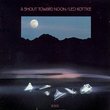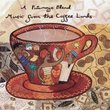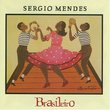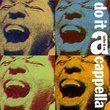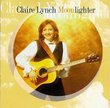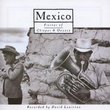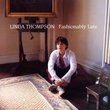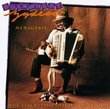| All Artists: Various Artists Title: Brasil: A Century of Song, Vol. 2: Carnaval Members Wishing: 0 Total Copies: 0 Label: Blue Jackel Original Release Date: 10/12/1995 Re-Release Date: 8/6/1999 Genres: International Music, Jazz, Pop, Latin Music Styles: South & Central America, Brazil Number of Discs: 1 SwapaCD Credits: 1 UPCs: 4015698552720, 600065500226 |
Search - Various Artists :: Brasil: A Century of Song, Vol. 2: Carnaval
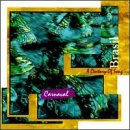 | Various Artists Brasil: A Century of Song, Vol. 2: Carnaval Genres: International Music, Jazz, Pop, Latin Music
|
Larger Image |
CD DetailsSimilarly Requested CDs
|
CD ReviewsA crazily creative set of rollicking samba etc!!! Phil Rogers | Ann Arbor, Michigan | 07/22/2002 (5 out of 5 stars) "This collection out-trumps David Byrne's more famous 'Brazil Classics 2: O Samba!' by plenty. You get over 35 minutes straight of 5-star dance tracks (#'s 2-9). #'s 12, 16 and 17 are also 5-star.A good many of the percussion tracks are very representative of typical samba school percussion sections, which are well mixed so as not to overload the amplifiers, your ears, or the mix. There are the deep drums (surdos); the small hoop drums (tamborims), played with 2 drumsticks taped together, which sound a lot like bongos; the Brazilian version of the tambourine (pandiero, somewhat larger than ours, with less jingles) as well as various other drums and small hand percussion. The typical 'samba school' percussion session which marches in Carnaval will have scores of players on each of these instruments, and scores of vocalists singing, usually in call-and-response fashion, with sometimes (what sounds like) extensive vocal solos interspersing the main melodies. At various junctures you'll hear the cavaquinho (a small ukelele-like guitar) dueling with the cuica (a friction drum, which is a drum with a stick through the drumhead - the stick is rubbed using a damp cloth to produce its characteristically expressive "dog-barking" sounds).The melodies themselves of these songs are of many different shapes, harmonies, colors, and emotions; there is a wide degree of rhythmic sophistication sung and played over the basic beat laid down by the percussionists. All in all, a tremendous amount of exuberance and creativity is represented here. While many of the 5-star tunes are quite fast, there is a quite a range of variation in the individual songs. #4 is a haunting kind of chant, solo voice joined later by chorus. #4 is quite frolicsome. #6 is slow, with a bit of pathos - the lead voice has quite a lot of dimension to it. #7 has a very positive-sounding melody, and the cuica really wails.#8, a medium tempo number, has an exemplary stereo mix/spread; the male lead vocal, the cuica and the cavaquinho really fill things out nicely. #9 has a tremendous amount of interesting movement in the melody, and more good cavaquinho/cuica interaction.#16 is more a fusion piece - the mix is a bit muffled, so be sure to turn up the treble control on your system. There are strong e-bass and cavaquinho parts, and it's interesting to hear the [individual] tamborim and pandeiro. This one packs in a lot more interest once the chorus finally comes in (over a minute into the song).#17 is one of the most stirring set of melodies to ever grace the planet. It's a new kind of sound overall, but remains very, very rootsy. Of the lesser songs, #1 is quite good . . . a slow song, somewhat sparely arranged, functioning like a fanfare "announcing" the beginning of the set. #'s 10-11 are good 4-star efforts. #'s 13-15 are rather lackluster attempts at fusing the traditional style with more modern songs - I'm not a fan of jazz fusion (etc.), so I don't attempt to be able to offer a honest take on these."
|

 Track Listings (17) - Disc #1
Track Listings (17) - Disc #1
